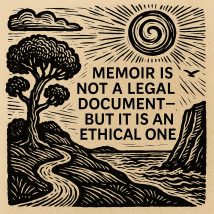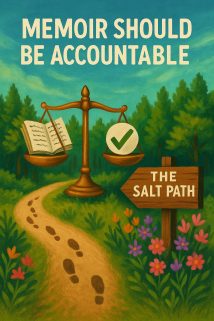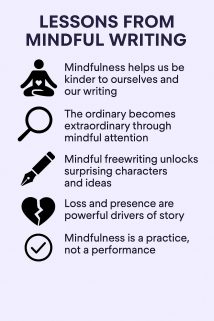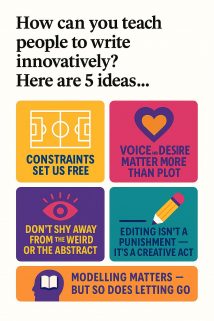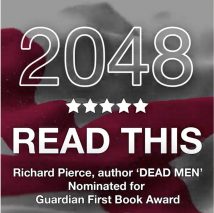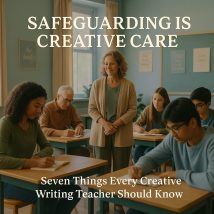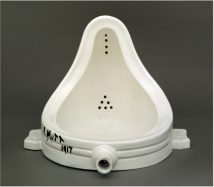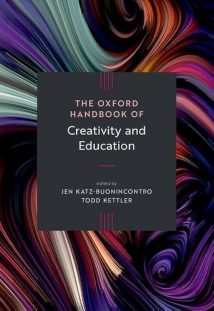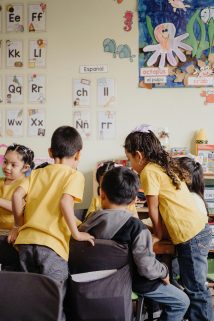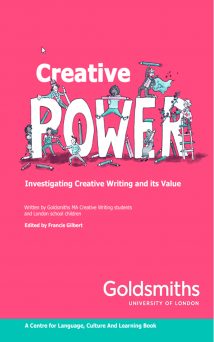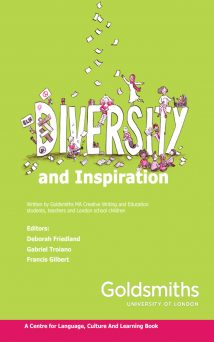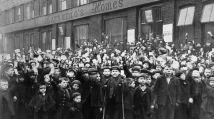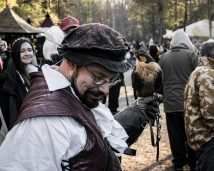Creative Writing Teaching
My focus here is on communicating how to teach creative writing in imaginative, practical and socially just ways. I place particular emphasis upon helping people of all ages and backgrounds write stories, poems, plays and creative non-fiction, including memoir and autobiography.
-
How Much Truth Is Enough? Reflecting on Raynor Winn’s Response to The Observer
What happens when the story you loved starts to shift? In this piece, I explore Raynor Winn’s recent public defence of The Salt Path—a statement both moving and evasive. While condemning the abuse Winn has received, the article interrogates what her response reveals (and conceals) about the ethics of memoir. Did the omissions distort the truth? What kind of trust do memoirists owe their readers? And when real-life complexities surface, do they deepen a story—or destabilise it? This isn’t about cancellation—it’s about accountability, narrative framing, and the quiet power of what’s left unsaid. #MemoirEthics #RaynorWinn #TheSaltPath #NarrativeTruth #LifeWriting #CreativeNonfiction #MindfulWriting #EthicalStorytelling #WritingCommunity
-
Ten Ethical Complexities of Memoir: After The Salt Path, and Two Decades After My Own
In my last post, I explored Thirteen Ways of Looking at The Salt Path. This follow-up dives deeper. Raynor Winn’s The Salt Path moved many. But recent reporting has raised ethical questions about omission, accountability, and the seduction of “emotional truth.” What are the responsibilities of the memoirist—especially when their story brings them sympathy, sales, or status? In this new article, I reflect on my own memoir—and what I got wrong. I explore what I’ve learned as a writer, teacher, and mentor of emerging voices on the MA in Creative Writing and Education at Goldsmiths. 🧭 Memoir is a journey, not a monument. 🕊️ Truth needs ethics, not just emotion. 🌊 The Salt Path leads us to difficult but necessary questions. 🔗 Link in bio/comments #MemoirMatters #EmotionalTruth #CreativeWriting #TheSaltPath #EthicalWriting #FrancisGilbert #WritersOfInstagram #NonFictionNarratives #GoldsmithsWriters
-
Five Reasons Why Mindfulness and Creative Writing Weave Together Well
What happens when we stop judging our writing—and simply listen? In this new blog post, I reflect on a recent workshop where writers used mindfulness to unlock voice, memory, and emotion. Together we explored how freewriting, object meditation, and mindful noticing can transform both what we write and how we feel about writing. Participants wrote about lipstick, tissue packets, Kindles—and discovered surprising characters, deep emotional truths, and stories of presence, loss, and joy. These moments reminded us that mindfulness is not about calming down—it’s about showing up. Drawing on my book The Mindful Creative Writing Teacher (Gilbert, 2025) and C. T. McCaw’s concept of “thick mindfulness,” I share five practical and poetic takeaways from the session. If you teach, write, or are simply curious about the link between awareness and creativity, this one’s for you. 💡 Read now and see how mindful writing can be radically freeing. #MindfulWriting #CreativeWritingTeacher #Freewriting #MindfulnessInEducation #WritersOfInstagram #AmWriting #WritingWorkshop #GoldsmithsUniversity #FrancisGilbert #WritingPrompt #MindfulLiving
-
How can you teach people to write innovatively? Here are 5 ideas…
In this practical and thought-provoking article, I reflect on a brilliant CPD session led by writer and teacher Niall Bourke as part of the MACWE summer programme. Niall offered a masterclass in how to teach creative writing in ways that are emotionally rich, structurally sound, and genuinely original. The article outlines five key takeaways that challenge conventional, formulaic approaches to writing instruction. From the power of constraints to the centrality of voice and desire, from embracing the weird and abstract to viewing editing as a creative act, and finally to the importance of modelling without over-directing — these insights offer teachers and writers alike a fresh, flexible “toolkit” approach. Full of vivid examples, quotable gems, and links to wider reading, this piece is for anyone who believes that creative writing teaching should spark joy, courage, and clarity — not just box-ticking or genre mimicry.
-
Six Things We Can Learn About Publishing and Navigating the World as a Writer
What does it mean to publish bravely? To speak even when your voice shakes, or is hidden behind a pseudonym? We were honoured to welcome back Nick Bailey, alumnus of the MA in Creative Writing and Education, who opened up a rich, moving conversation about the realities of writing and publishing today. From self-publishing his genre-bending novel 2048 to working with a values-driven indie press, Nick shared not just tips, but truths: how publishing can empower, expose, disguise, and liberate. We heard from participants using pseudonyms to survive racism in education, from writers navigating rejection, and from those reshaping what it means to “be seen.” This blog distils six powerful takeaways — from building creative resilience, to understanding publishing as pedagogy. It’s about voice, not vanity. Process, not product. And why the best reason to publish is because your story needs to be told. Read it in full on my site. Reflect. Share. Teach. Because writing bravely is where publishing well begins. #MindfulPublishing #CreativeWritingEducation #NickBailey #SelfPublishing #IndiePress #PublishingAsPedagogy #MAWritingEducation #WritersOfInstagram #LinkedInWriters #BlueSkyWriters
-
The Mindful Creative Writing Teacher
This blog introduces The Mindful Creative Writing Teacher—my book for anyone teaching or facilitating creative writing, whether in schools, universities, prisons, or community spaces. Drawing on decades of experience, I offer a fresh, practical, and compassionate approach to teaching writing that blends mindfulness, creativity, and social justice. In the blog, I explain why I wrote the book: to move beyond rigid workshop models and embrace a more humane, dynamic, and inclusive pedagogy. The book is filled with real-life case studies, poems, hands-on activities, and reflective prompts designed to help you cultivate creativity, wellbeing, and critical thinking in your classroom. It’s for English teachers, creative writing tutors, and writers alike—especially those looking to empower diverse voices, support reluctant or neurodiverse learners, and find joy in their own writing again. You’ll find strategies for teaching storytelling, feedback, decolonisation, and multimodal writing, as well as guidance on developing your own mindful teaching identity. This blog offers a glimpse into the book’s ethos: writing not just as a craft to be perfected, but as a transformative act of attention, empathy, and expression. If you’re looking to teach writing in a way that’s more authentic, creative, and connected, this book—and blog—are for you.
-
7 Transformative Lessons from First Story’s Creative Writing Approach – A Goldsmiths Reflection
In this blog, I reflect on an inspiring session led by novelist and First Story writer-in-residence Pete Hobbs. Drawing on seventeen years of working with young writers, Pete shared a wealth of practical, playful exercises and a deeply inclusive pedagogy that reimagines creative writing as a space for experimentation, voice, and community. From evoking memory through sensory detail to empowering students to write in their own linguistic registers, his approach offers powerful strategies for educators at all levels. This post captures the session’s key takeaways—and celebrates the joyful, transformative possibilities of writing. It left me rethinking how I teach.
-
Seven Things Creative Writing Teachers Should Know About Safeguarding
I’m Francis Gilbert, and I’ve just published a vital blog post: Seven Things Creative Writing Teachers Should Know About Safeguarding. Drawing on a powerful masterclass led by Danja Sanovic at Goldsmiths, I reflect on how safeguarding isn’t just a legal box-tick but a deeply creative, relational act. Whether you’re teaching in schools, leading workshops in the community, or working with adults, this post offers clear, compassionate guidance. It’s essential reading for anyone using writing to reach vulnerable groups. Creativity thrives when everyone feels safe. Read the post and rethink how you hold your writing spaces.
-
6 Ways to Design Effective Creative Writing Lessons
I’ve written this blog to share some of the key insights from a recent seminar I delivered for students on the MA in Creative Writing and Education at Goldsmiths—and for anyone interested in designing more mindful, engaging creative writing lessons. Drawing on the CASTERS framework, James Nottingham’s “Learning Pit,” and ideas around publishing, reflection, and inclusive practice, the session offered practical strategies for teaching writing with presence, purpose, and care. Whether you’re a teacher, writer, or facilitator, this blog offers inspiration and guidance for creating lessons that challenge, connect, and empower. Find out more and join the conversation.
-
📎 CUT + COPY + TEACH: 5 Ways Uncreative Writing Will Turbocharge Your Teaching
As a writer and educator, I’ve long been fascinated by how creativity works in the classroom. In this blog, I explore Uncreative Writing, a radical teaching approach developed by Dr Cath Clover. Drawing on her powerful workshop at Goldsmiths, I show how copying, remixing, and reframing existing texts can spark critical thinking, accessibility, and genuine creative joy. Whether you’re teaching English, media, or any subject, this inclusive method helps students find their voice through found words.
-
5 Ways Creative Writing Can Fuel Creativity
I’ve long believed that creative writing isn’t just for the English classroom—it’s a radical, transformative practice that can fuel creativity across the curriculum. In my new chapter for The Oxford Handbook of Creativity and Education, I explore how freewriting, diagrarting, critical literacy, and compassionate feedback can empower learners of all ages. Drawing on decades of teaching experience and recent research, I show how creative writing can heal, liberate, and inspire. This piece is for educators, writers, and anyone interested in reimagining how we learn and grow through words.
-
Five Ways to Decolonise the Teaching of Creative Writing
In April 2025, I had the joy of welcoming back Carinya Sharples—a former student of mine from the MA in Creative Writing and Education I lead at Goldsmiths—for an unforgettable session on Decolonising Creative Writing Pedagogies. Carinya held the space with grace, rigour and radical care, sparking vital conversations about power, voice, and language. In this blog, I share five key strategies that emerged from her talk and my own experience—practical, powerful ways to rethink how we teach creative writing. If you’re ready to challenge norms and embrace liberatory practice, come explore more with me by reading the blog.
-
Towards boundary crossing: primary and secondary school teachers teaching creative writing and its redrafting
This academic article, written by Professor Tom Dobson and I, explores the research we did looking at primary and secondary school teachers attitudes towards creative writing and redrafting. This is a rare piece of research which compares primary and secondary school teachers’ approaches to teaching creative writing. It shows that primary school teachers can be formulaic in the way they teach creative writing, using product approaches. However, in secondary schools the picture is different: teachers, particularly those, who are writers themselves, give students more agency in redrafting and shaping their writing. This indicates how professional development should involve primary and secondary school teachers in dialogue with one another to cross boundaries of practice.
-
The British Library, research and creative writing
Creative writing can be used to help people engage with the British Library and its collection. MA students led members of the public through the Library, inviting creative responses to its archive and exhibitions.
-
Of Note- Four Ways Taking Notes have Enriched My Life
Notes have helped me remember; they’re my safe space; they’re therapeutic; and they’ve liberated my imagination
-
Creative Power: Investigating Creative Writing & Its Value
An instructive and inspiring collection written by Masters’ students at Goldsmiths’ university, and pupils from South London schools. Essential reading for anyone interested in finding ways of thriving in a fractured world.
-
Diversity and Inspiration: a fantastic anthology for creative writers & teachers
This book contains many tips for helping teachers of creative writing, written by my students on the MA Creative Writing and Education at Goldsmiths.
-
A Century of Teaching Creative Writing in Schools: the Newbolt Report and teaching creative writing
Newbolt strongly advocates imaginative ways of teaching writing, championing self-expression above rote-learning.
-
Becoming the falconer: productive feedback for the redrafting of creative writing
Aspects of the neoliberal education system can preclude the development of young writers. Feedback can be unempathetic, but it can also be productive, creating an internal dialogue that develops the writer over time.

